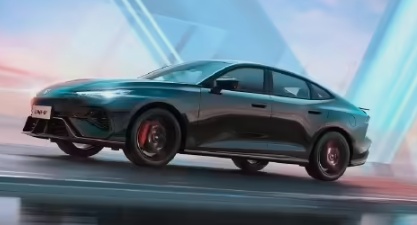China's l2 assisted driving penetration rate exceeds 50%, highest in the world
On July 18, it was reported that the 2025 New Energy Smart Vehicle New Quality Development Forum was successfully held in Changchun on July 15. This year's conference, themed "New Quality Leading Intelligent Innovation for the Future," invited leaders from relevant government departments, as well as experts from universities and representatives from enterprises to participate.
Zhang Yongwei, Vice Chairman and Secretary-General of the China Electric Vehicles Hundred Forum, stated, "Currently, the global competition surrounding intelligence has fully unfolded. The penetration rate of L2 level assisted driving in our country has exceeded 50%, ranking the highest in the world. At the same time, the penetration rate of emerging technologies such as parking assistance driving in mid-to-high-end models has also exceeded 20%."
He stated that China's automotive industry has achieved a leapfrog in electrification and a leading position in intelligence, but it still needs to consolidate its advantages. This means that in the Chinese automotive market, for every two new cars sold, at least one is equipped with L2-level assisted driving technology.

Zhang Yongwei believes that the core competitiveness of the automotive industry is shifting from mechanical hardware to intelligence and AI infrastructure, with cross-industry integration becoming the core driving force for reconstructing the ecosystem. The period from now until 2030 is a key window for cultivating intelligent driving culture and popularizing low-level intelligent driving. Enterprises need to grasp the development goals and pace of intelligent vehicles to seize opportunities in global competition.
Zhang Yongwei stated that the current core tasks for China's automotive industry include two phased goals: from 2025 to 2030, accelerate the popularization of assisted driving, expand the user base, and cultivate a culture of intelligent driving. At the same time, he emphasized that our goals should not be limited to the popularization of lower-level technologies; we must quickly propose development targets for L3 and higher-level autonomous driving. Countries and enterprises that are the first to achieve the application of L3 and above technologies will occupy a key advantage. Based on corporate dynamics, the years 2030 and the two or three years following may be a window period for L3 and L4 moving from pilot projects to large-scale applications.
【Copyright and Disclaimer】The above information is collected and organized by PlastMatch. The copyright belongs to the original author. This article is reprinted for the purpose of providing more information, and it does not imply that PlastMatch endorses the views expressed in the article or guarantees its accuracy. If there are any errors in the source attribution or if your legitimate rights have been infringed, please contact us, and we will promptly correct or remove the content. If other media, websites, or individuals use the aforementioned content, they must clearly indicate the original source and origin of the work and assume legal responsibility on their own.
Most Popular
-

At Least 44 Dead in Century-Old Fire! Questioning Hong Kong's Hong Fu Garden: Why Has the Path to Fire Resistance Taken 15 Years Without Progress?
-

Satellite chemical's profits surge! can the 26.6 billion yuan high-end new materials project meet expectations? a review of progress on four major projects
-

Key Players: The 10 Most Critical Publicly Listed Companies in Solid-State Battery Raw Materials
-

Estun Turns Profitable in 2025 Half-Year Report, Industrial Robot Shipments Rank First Among Domestic Brands
-

Avatr Files for IPO on HKEX, Plans to Complete Listing in Q2 2026






